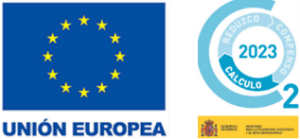This time we are working on a new water treatment plant that we have set up for a national company dedicated to the manufacture of vegetable extracts. Our client needed to adapt the well water to, on the one hand, supply the boilers and, on the other hand, provide the factory with drinking water.
After studying our client’s needs, J. Huesa’s technical team opted for the design and manufacture of a customized water treatment plant using reverse osmosis followed by a remineralization system.
Background and design data
Design capacity
The plant has been designed to guarantee the treatment of 54 m³/day, to service the boilers and the customer’s facilities, as follows:
| Concept | Flow Rate |
|---|---|
| Boiler water flow rate | 30 m³/day |
| Drinking water flow rate | 24 m³/day |
| Osmosis water flow | 54 m³/day |
| Water Flow to the WTP | 3.9 m³/h |
| Rejection Flow to the RO | 1.2 m³/h |
| Osmosis plant conversion | 70 % |
| Working hours | 20 h/day |
| Raw water accumulation | 3 m³ |
| Osmosed water accumulation | 10 m³ |
| Drinking water storage | 3 m³ |
Table 1. WTP Characteristics

Picture 1. Pretreatment. Chlorination system
The objective of this water treatment plant is to establish a global solution for the removal of salinity and organic contamination from well water by means of reverse osmosis for use in boilers and for use as drinking water by means of a remineralization process.
Adopted solution
After studying the starting conditions and the general objectives of the project, J. Huesa’s technical team opted for the design, manufacture, supply and commissioning of a water treatment plant composed of the following treatment train:
- In-line chlorination
- Pre-treatment
- Reverse Osmosis
- Osmosis water storage
- Remineralization system
- Recirculation system – drinking water tank chlorination
Pretreatment
In an initial stage of the process, sodium hypochlorite will be dosed in line so that in storage we have a residual chlorine value between 0.6-0.8 ppm with the aim of eliminating the organic matter present in the water.
The water stored in the raw water tank then passes through the pre-treatment prior to reverse osmosis, so that in the first stage it circulates through a mesh filter to remove solids above 25 microns. Subsequently, it passes through a dechlorinating filter that removes any residual chlorine that may be present in the water to prevent damage to the reverse osmosis membranes.

Picture 2. RO view
Reverse Osmosis
In the next stage of the process, the water passes through the reverse osmosis system, built on a stainless-steel skid and equipped with a vertical AISI-316 stainless steel centrifugal pump with a capacity of 2.7 m³/h.
The osmosis system is configured in a single stage, consisting of a pressure pipe made of FRP containing 3 8040 membranes with high salt rejection. The membranes are of spiral configuration, built in polyamide and special for brackish water up to 8000 ppm and with the characteristic of working at low pressure.
All membrane installations are subject to fouling over time, depending to a greater or lesser extent on the pre-treatment installed. The reverse osmosis plant includes a membrane washing system consisting of a 300-litre reagent preparation tank, stainless steel recirculation pump and stainless-steel stage isolation and recirculation valves.
The system is configured in such a way that, in the future, our client will be able to increase the flow rate of the permeate produced from 2.7 to 3.5 m³/h.
The permeate from the reverse osmosis plant is collected in a GRP storage tank with a capacity of 10 m³. This tank will be the water consumption point for the boiler and, in turn, will feed a demineralizing unit.

Picture 3. Remineraliser view and continuous chlorination system
Remineralization system
The osmosis water for the drinking water tank is passed through an automatic demineralizing filter with a clack valve and a nominal flow rate of 2.54 m³/h. The filter uses calcite as the demineralizing agent.
Picture 3. Remineraliser view and continuous chlorination system
Recirculation system – chlorination of drinking water tank
The drinking water is stored in a 3 m³ tank, which has been fitted with a continuous recirculation system for chlorination to prevent the proliferation of microorganisms and guarantee the disinfection of the water.
This system passes the water through a circuit in which sodium hypochlorite is dosed, with the aim of keeping the accumulated water in a suitable condition for human consumption.
Instrumentation and control
The plant is equipped with instrumentation and control elements (automatic valves, pressure switches, pressure transmitters, flow meters, conductivity and redox meters, among others) which are centralized in an electrical panel.
Likewise, the panel includes a programmable logic controller for the management and configuration of the plant. J. Huesa’s Instrumentation and Control team has designed the control panel so that it can be integrated into the customer’s SCADA system, allowing a customized programming of all the operating parameters, as well as external connections of levels, alarms, pre-treatment, among others, through different I/O modules.






